Ocean Acidification, Temperatures Set Worrying Records in 2021, US Ocean Conservation Efforts Have Major Gaps, UN Announces Plans to Boost Renewables, and more
May 20, 2022 – We gather news: You stay informed

1. Four Key Measures of Climate Change Set Records in 2021
Greenhouse gas concentrations, sea level rise, ocean temperatures, and ocean acidification all hit record highs in 2021. The World Meteorological Organization State of the Global Climate report found that the past seven years were the hottest on record and that temperatures in 2021 were 1.11 Celsius above pre-industrial baseline levels. Oceans absorb up to 25% of the CO2 emitted by human activity and help regulate global weather patterns. The report said that the upper 2,000 meters of ocean had continued to warm, breaking the 2020 temperature record. UN Secretary General António Guterres said the assessment showed “the dismal litany of humanity’s failure to tackle climate disruption” and called for governments to accelerate their transition away from planet-warming fossil fuels. Guterres said countries needed to shift towards decarbonizing this century to stave off the worst impacts of climate change and limit heating to 1.5C.
Thank you for your generous gift that will help us continue the production of this weekly, free publication
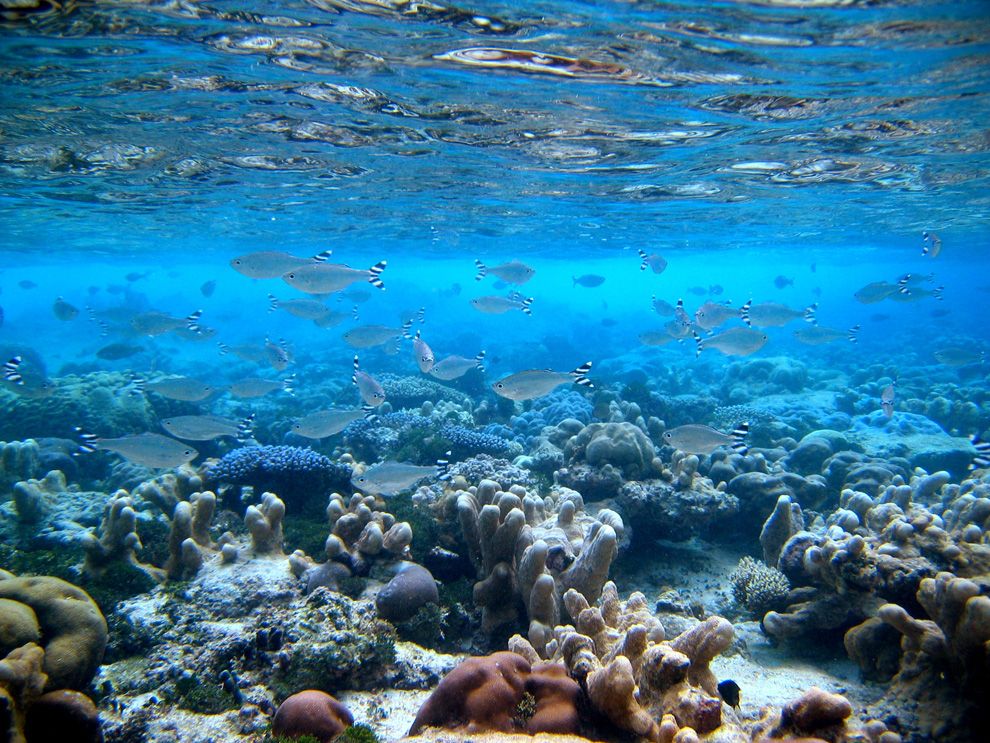
2. United States’ Ocean Conservation Efforts Have Major Gaps, Analysis Shows
More than 98% of US waters outside the central Pacific Ocean are not part of a marine protected area (MPA), and the ones that are tend to be “lightly” or “minimally” protected from damaging human activity, research shows. A new study examined the nation’s 50 largest MPAs using a groundbreaking guide produced last year by some of the same scientists who worked on the current research. Those 50 account for 99.7% of US MPA coverage. Among the study’s conclusions: The US needs to create more, and more effective, MPAs—and fast. 99% of US waters that are “fully” or “highly” protected are in the central Pacific, meaning that critical marine systems, such as those in the Atlantic, Arctic, and northeast Pacific oceans and the Caribbean Sea are vulnerable to unprecedented pressures, and so are the coastal economies that depend on those systems.
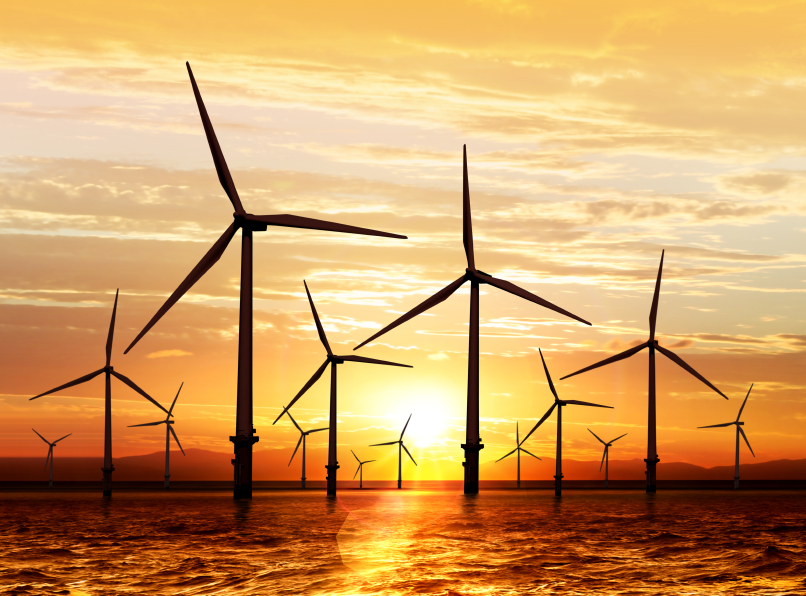
3. UN Floats Plan to Boost Renewables as Climate Worries Mount
UN Secretary-General Antonio Guterres has launched a five-point plan to expand use of renewable energies, hoping to revive world attention on climate change as the UN’s weather agency said key markers of climate change reached record highs last year. In his plan, Guterres called for fostering technology transfer and lifting intellectual property protections in renewable technologies. Guterres wants to broaden access to supply chains and raw materials that go into these technologies. He wants governments to promote renewable energies, such as by fast-tracking solar and wind projects. He called for a shift away from government subsidies for fossil fuels that now total a half-trillion dollars per year. Guterres said private and public investments in renewable energy must triple to at least $4 trillion dollars a year. He noted that subsidies for fossil fuels are more than three times higher than those for renewables.
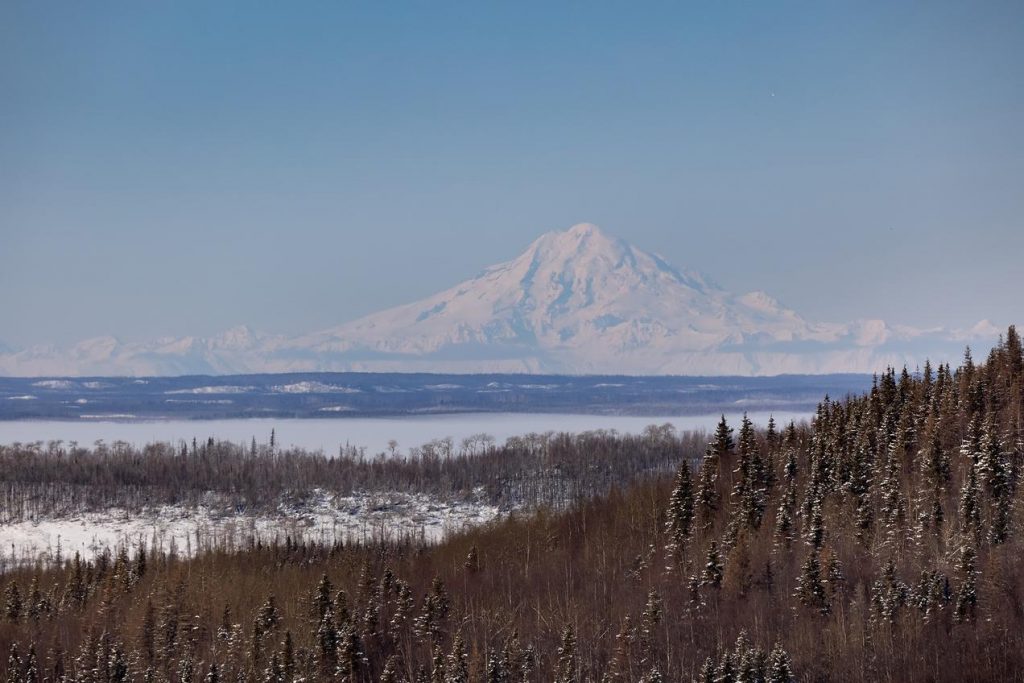
4. White House Cancels Oil and Gas Lease Sales in Alaska, Gulf of Mexico
The administration will not move forward with planned oil and gas lease sales in the Gulf of Mexico and Alaska’s Cook Inlet due to insufficient industry interest. Meanwhile, the planned sale of two leases, lease 259 and lease 261, in the Gulf of Mexico will not proceed due to contradictory court rulings on the leases. Previous administrations canceled lease sales in the area in 2007, 2008, and 2011, also citing lack of industry interest. Under federal law, the Interior Department must adhere to a five-year offshore leasing plan, which would end at the end of June in the case of the affected leases. “I’m glad Cook Inlet belugas won’t be forced to face even more oil drilling in their only habitats, but much more must be done to protect these endangered whales from offshore drilling,” said Kristen Monsell of the Center for Biological Diversity.
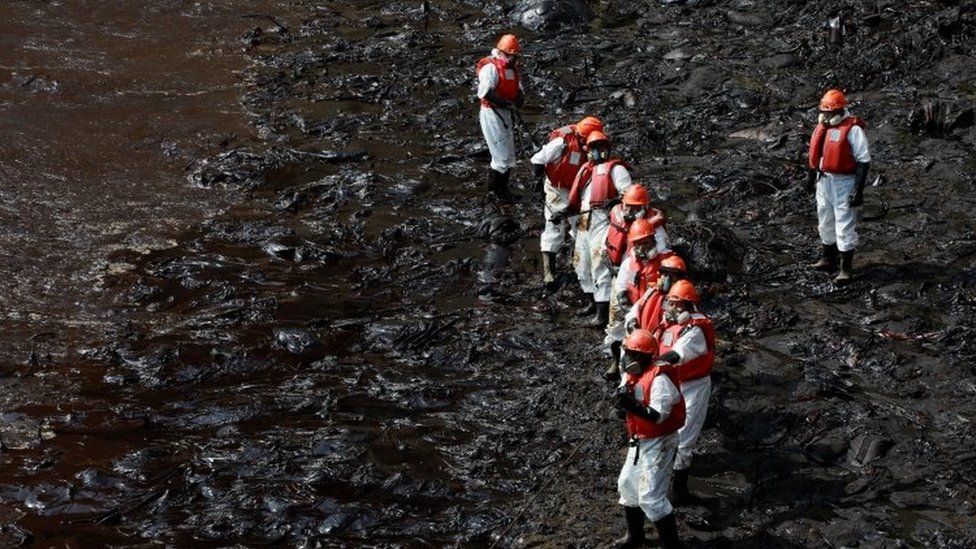
5. Peru Sues Energy Company Repsol for $4.5B Over Oil Spill
Peru has filed suit against six companies involved in the massive January oil spill that ravaged its coast, seeking $4.5 billion in damages. Among those named in the suit are Repsol, La Pampilla Refinery, and Fratelli d’amico Armatori (owner of the tanker involved). “These suits could create precedents for oil spills that cause damage and collective non-material damages due to environmental pollution of coastal areas,” said Julian Palacin of the National Institute for the Defense of Competition and Protection of Intellectual Property. The spill occurred while the Italian-flagged tanker “Mare Doricum” was unloading crude oil at the Repsol-owned La Pampilla refinery in Ventanilla, north of Lima. The oil company attributed the incident to waves caused by a massive volcanic eruption on the island of Tonga, on the other side of the Pacific Ocean, and the Peruvian government described it as an “ecological disaster.”
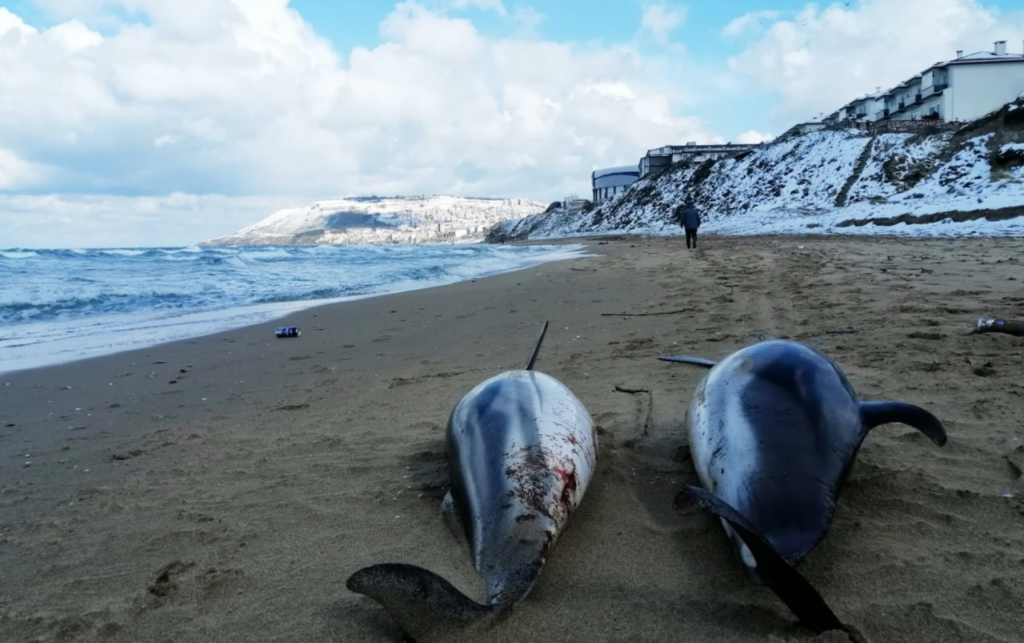
6. Warship Sonar Could Be Causing Mass Dolphin Deaths in the Black Sea
Mass dolphin deaths have scientists worried that pollution from Russia’s war in Ukraine could have lasting impacts on ecosystems in the region. More than 100 dolphins have washed up on the Turkish coast since February, a high number compared to previous years. Dolphins have also recently been spotted acting unusually in other countries sharing the coastline. Local marine biologists suspect that a driving cause is likely noise pollution from warships in the north. The low-frequency sonar of warships and submarines directly interferes with dolphins’ echolocation. Unable to navigate, the dolphins cannot identify prey and therefore starve. They can also get confused, accidentally swimming into rocks or onto shore. Some might also swim into naval mines. These deaths and other war-related pollution could create a “crisis in biodiversity,” according to the Turkish Marine Research Foundation.
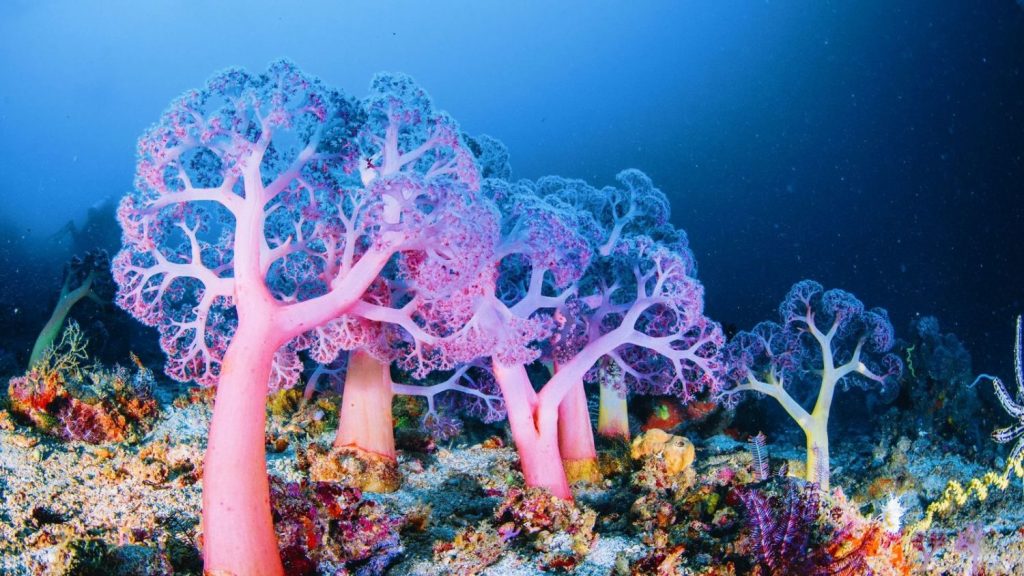
7. Large-Scale Ocean Sanctuaries Could Protect Coral Reefs From Climate Change
A study into managing the effect climate change has on coral says that more international collaboration is needed to ensure the future of the more than 6,000 species. The study advocates for areas that can stretch thousands of miles, often across national boundaries, to protect these ocean environments. Providing a “continuum of conservation” would benefit reefs immensely, co-author Andrea Grottoli said. But because conservation policies differ between various governments and politicians, that can make it hard to protect the environment. Still, even as the global population of coral dwindles, the genetic diversity of coral species helps ensure that some corals may be able to adapt and recover. And while there is an urgent need to reduce global greenhouse gas emissions, the study suggests that in the meantime, we need to take broad transdisciplinary approaches to creating both local and large-scale ocean sanctuaries.
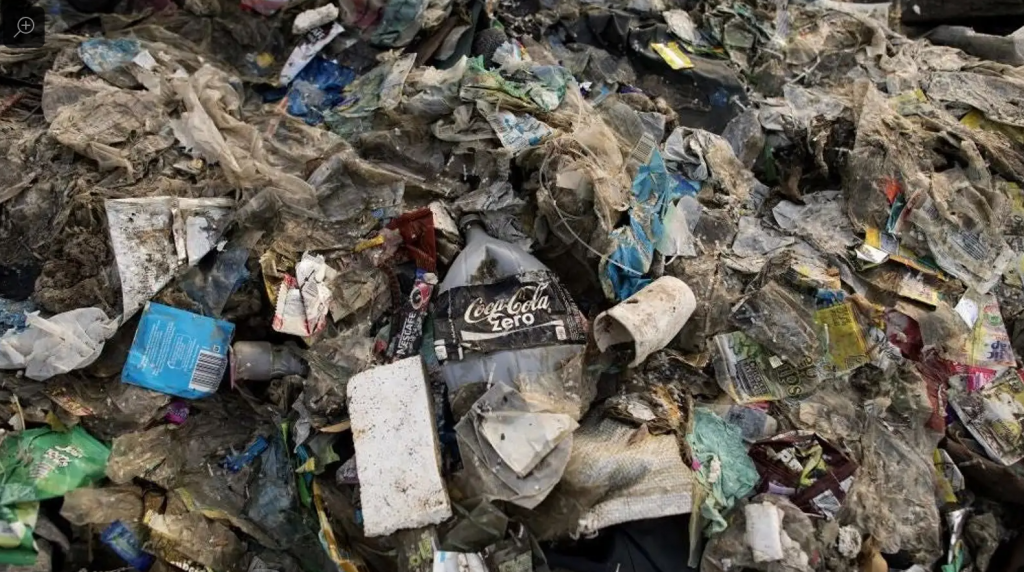
8. Recycling Pledges From Soft Drink Companies Won’t Make a Dent in Ocean Pollution
A new report commissioned by nonprofit Oceana found that plastic pollution pledges won’t make much difference in the amount of plastic pollution in the oceans. The analysis looked at five major soft drink companies’ recycling pledges. Each company has promised to increase the amount of recycled materials in their PET plastic bottles from 25% to 50% by 2025 to reduce waste. But analysis found that the recycling pledges would only reduce plastic bottle pollution by about 7%, meaning that more than 33 million bottles will still end up in waterways as a result of company sales. “Soft drink brands have been focusing on recycling as the solution to the plastic pollution crisis, but given the findings of this study, Oceana is calling on these companies to prioritize the adoption and expansion of refillable bottles instead,” Oceana’s Dana Miller said.
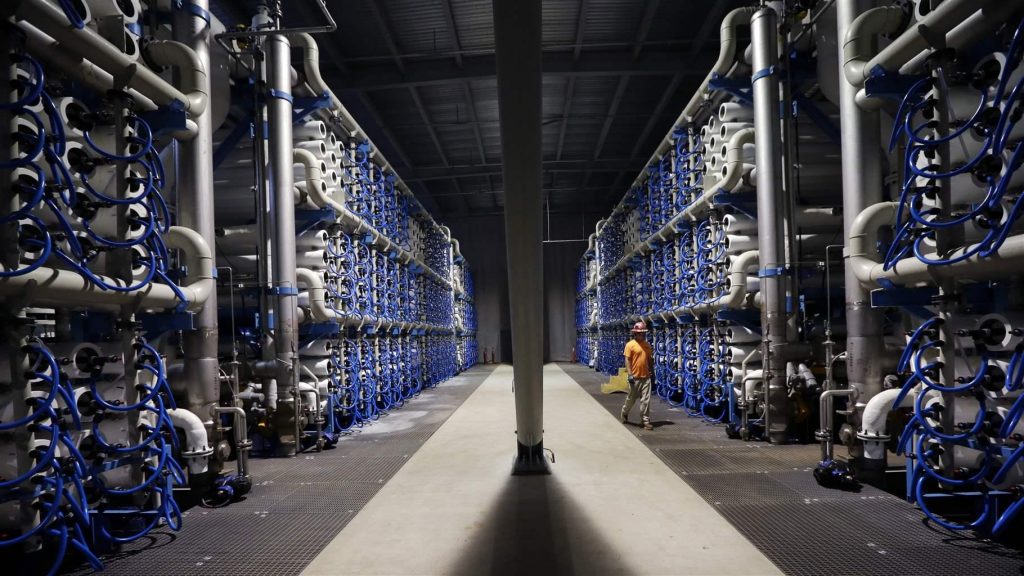
9. California Panel Unanimously Quashes Desalination Plant
The California Coastal Commission unanimously rejected a private company’s proposal to build a desalination plant southeast of Los Angeles capable of producing 50 million gallons of freshwater daily. The commission cited environmental and economic costs in denying the plan, ranging from sea life being killed during water intake to rising water bills and sea levels. The proposed facility would have joined another desalination plant further south, which supplies 10% of the region’s water. Nearly all of California remains in severe drought. Snowpack is down, while reservoirs across the West are at record low levels. States will have to find new sources of water and implement potentially drastic restrictions on water consumption, experts warn. But environmental groups opposed the proposed $1.4 billion seawater desalination plant, arguing the purifying process is not only too energy-intensive but also kills marine life critical to the local ecosystem.
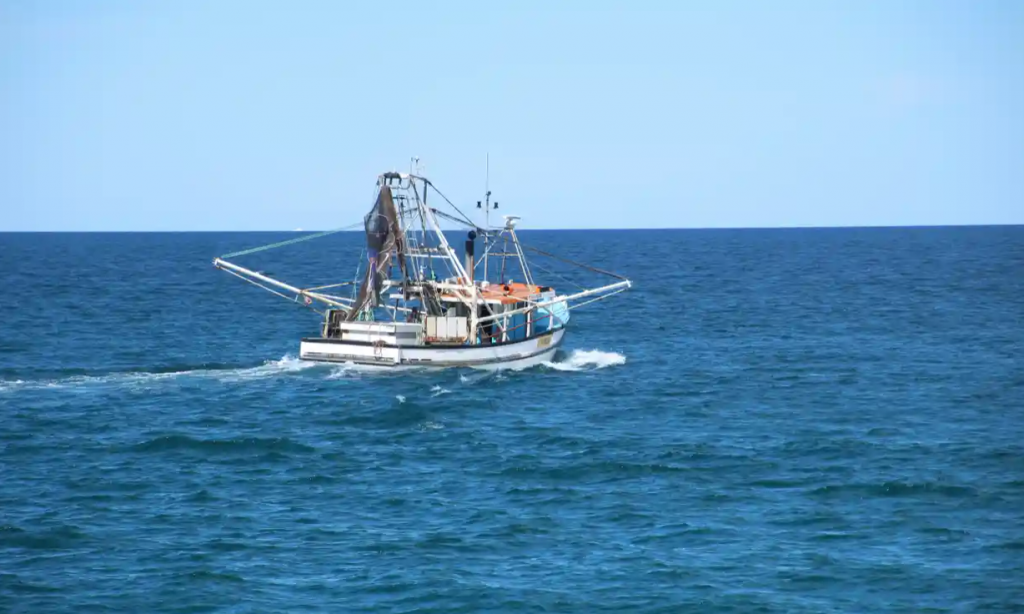
10. Australian Authorities to Buy Out Fisheries, Citing Climate Crisis
Australia will spend $20m to buy out fisheries in the southeast partly because the climate crisis is affecting population numbers of some species, making current fishing levels unsustainable. The Australian Fisheries Management Authority will buy back vessel permits in the southeast trawl fishery, which is the country’s largest commonwealth-managed fin fish fishery. It is the first time the authority will conduct a buyout because of climate change and environmental factors, which are preventing some populations’ recovery. The authority said that it was particularly concerned about population numbers of four species – jackass morwong, redfish, john dory, and silver trevally – whose numbers do not appear to be recovering despite being subject to low catch limits designed to address historic overfishing. The Australian Marine Conservation Society expressed concern that management practices within the fishery were also a factor, alongside climate change, in the decline of some fish species.

11. There Are Many Sea Turtle Success Stories Along the African East Coast—But Thousands Are Still Dying
Conservation of sea turtles along Africa’s east coast has made good progress in recent decades—but many still die each year due to human activity, researchers say. Experts reviewed evidence from 1965 to the present about sea turtles along the coast of Somalia, Kenya, Tanzania, Mozambique, and South Africa. There are growing numbers of loggerhead turtles in South Africa and Mozambique and increasingly effective conservation networks. But the illegal take of turtles, bycatch, and loss of nesting and foraging habitats remain major threats. Better protection in accordance with the law and greater collaboration will be needed in response to increasing pressure on turtles due to human activity. “Sustained community engagement and support towards community self-policing will help to make strides in tackling the issue,” says Gladys Okemwa, of the Kenya Marine and Fisheries Research Institute.
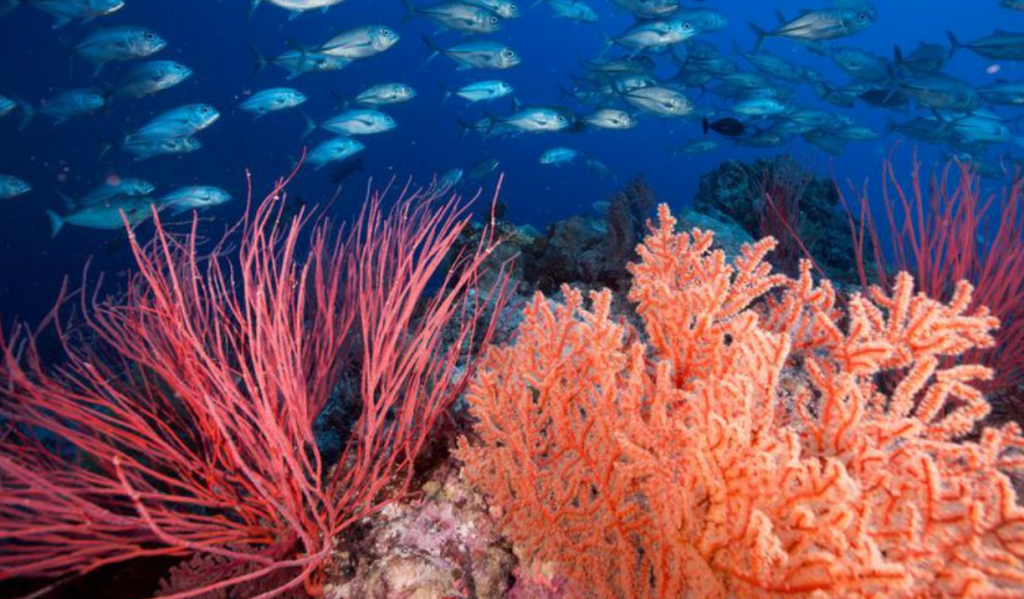
12. Ambitious Research Project Draws Upon Tourism to Help Save the Great Barrier Reef
Scientists stress there’s still a chance to save the Great Barrier Reef, and many conservationists believe tourism will play a critical role on its road to recovery. Andy Ridley, founder of Earth Hour, is operating Citizens of the Great Barrier Reef, which works with scientists and Indigenous sea rangers to survey, map, and model the entire reef system through the annual Great Reef Census. This data is used by researchers and the Great Barrier Reef Marine Park Authority to alter management practices, such as how to best respond to crown-of-thorn outbreaks. The ambitious project wouldn’t be possible without tourism operators. More than 20 local tourism operators have donated time and resources to the project, including through coral restoration. Tourists can also get involved, by assisting in surveying on snorkel or dive tours. Without tourists, Ridley argues, the reef could lose its greatest advocates.

13. Rising Sea Levels, Storms Threaten Trees, Marshland in North Carolina’s Outer Banks
In the Outer Banks, once-dry ground is now waist-deep water. Forests have transitioned to shrubland. Stretches of shrub habitat are marsh. And what once was marsh has succumbed to the encroaching sea. As sea levels rise, droughts deepen, and storms intensify, saltier water enters these woodlands more readily from surrounding water bodies. Persistently wet conditions weaken existing trees. Saltwater intrusion pushes already stressed forests to the breaking point and hastens the death of trees. The result are expanses of dead or dying trees, known as “snags,” that stand as grim monuments to a shifting ecosystem. As they proliferate, scientists are racing to understand the factors driving the changes, to slow them down, and predict the consequences if the trend continues. And they are investigating what the profound changes to coastal systems might mean for the migrating birds, mammals, reptiles, and plants that call them home.
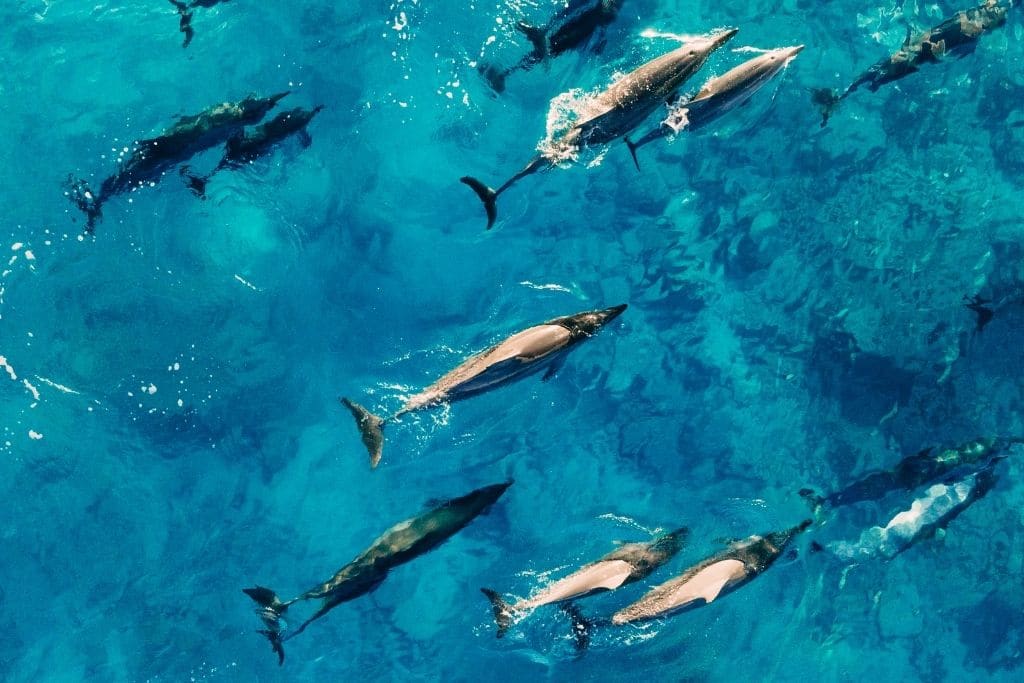
14. Why Endangered Dolphins Are on the Rise
Out of 41 dolphin species, nine are considered endangered by either the International Union for Conservation of Nature, the Endangered Species Act, or both; and one species may already be extinct. The main drivers of dolphin endangerment are climate change and human activities. The sheer speed at which the climate is changing could mean that dolphins may not have time to adapt. Sea level rise, a warming climate, ocean acidification, and the loss of icy polar habitats are directly influenced by climate change and will impact dolphin species around the world. On top of a rapidly changing habitat, dolphins’ prey is rapidly reducing in numbers. The other primary cause of dolphin endangerment is human activities. This often includes fishing, river traffic, and pollution. Conservation efforts are underway to restore dolphin species around the world, from regulating gillnets that can entangle dolphins to expanding protected areas.
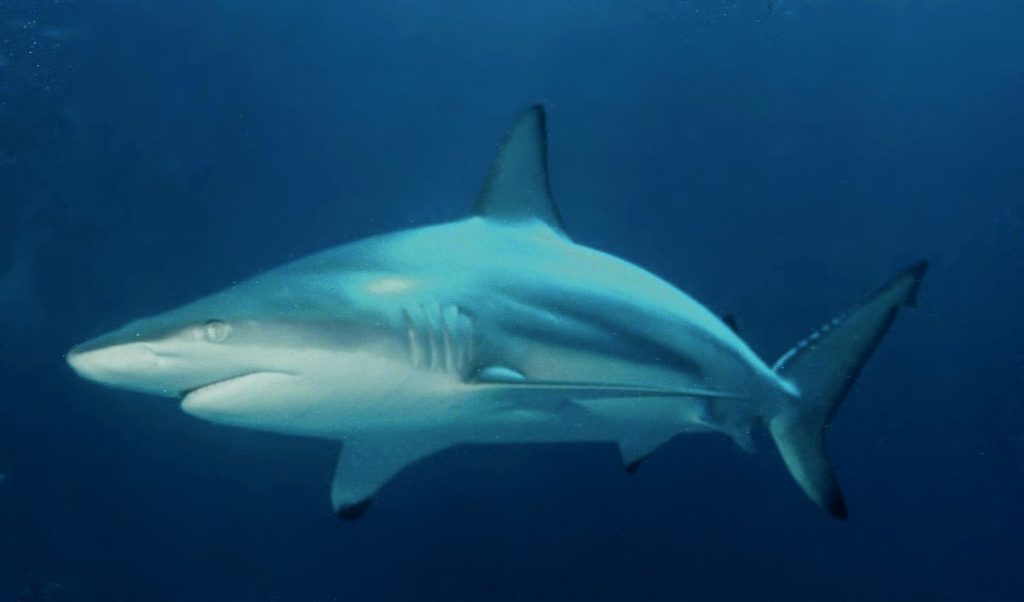
15. US Fish Stocks Continue Era of Rebuilding and Recovery
The National Oceanic and Atmospheric Administration (NOAA) released the 2021 Status of Stocks report, highlighting the efforts to rebuild and recover US fisheries by assessing the more than 460 stocks managed by NOAA Fisheries. The report “shows that the United States continues to be a global leader in sustainable fisheries management, as we work to understand how climate change is affecting fisheries,” said Dr. Rick Spinrad, NOAA administrator. “The report demonstrates that we remain on track to maximize marine fishing opportunities while ensuring long-term ecological and economic sustainability in our changing world.” This year’s report also featured the first-ever assessment of the Atlantic blacktip shark, which is not overfished. Assessing stocks for the first time contributes to the information used to set appropriate management measures. Sustainable fisheries play an important role in the nation’s economy, providing commercial, recreational, and subsistence fishing opportunities and sustainable seafood.
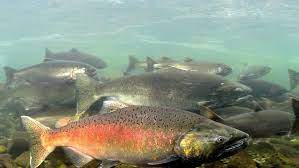
16. Drug-Resistant Sea Lice an Increasing Problem for British Columbia Fish Farms
The numbers of endangered juvenile wild salmon migrating from British Columbia’s rivers to the Pacific Ocean are dwindling, possibly due to sea lice parasites. These crustaceans cling to the backs of wild salmon, feeding on their skin, muscle tissue, and blood. A few won’t hurt adults, but juveniles with underdeveloped scales can be harmed or killed when heavily infested. A new study finds lice are increasingly resistant to a pesticide the fish farming industry uses to fight them: SLICE, or emamectin benzoate. Parasites can proliferate on fish farms and then transfer to wild salmon. SLICE is the only approved pesticide in Canada but not the only option for fish farms struggling with lice. Other environmentally friendly methods include the use of specialized delousing boats. Still, fish farms are controversial in Canada, with the government planning to phase out open-net salmon farms in BC by 2025.
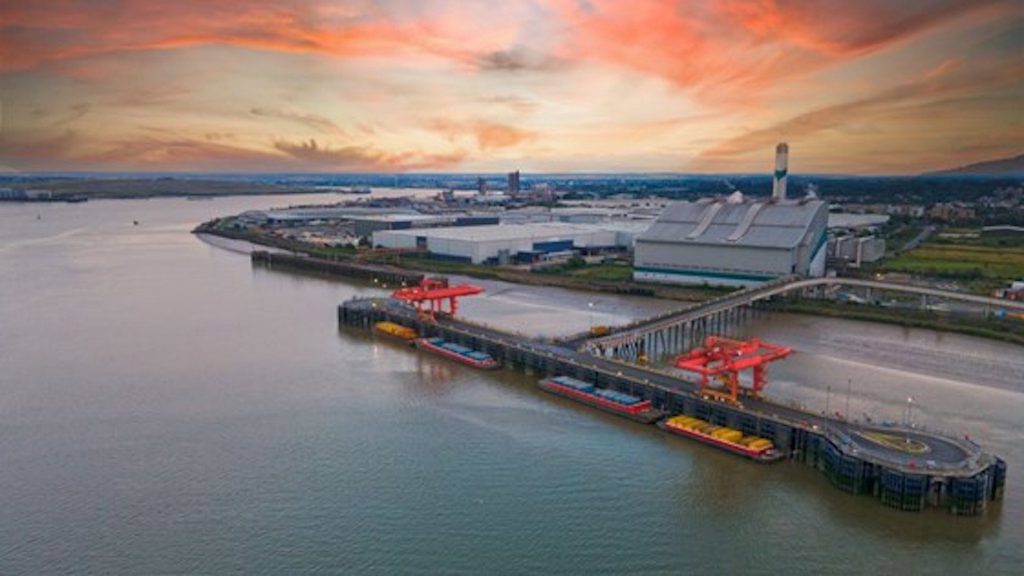
17. Emissions From London Rubbish Will Be Buried Under Norwegian North Sea
CO2 emissions generated by burning waste at incineration plants in London will be stored thousands of meters under the North Sea. Cory, a UK waste management and recycling company, plans to capture emissions at London plants and ship them in liquid form to a North Sea pipeline terminal connected with Norwegian infrastructure. The deal was signed as a memorandum of understanding with Norway’s Northern Lights carbon capture and storage project. Under the accord, Norway will, by the end of the decade, store about 1.5 million metric tons of CO2 in a reservoir more than 2.5 kilometers beneath the North Sea. The Northern Lights project will be the first cross-border transport and storage infrastructure network for carbon emissions. Norway is pushing to become a leader in carbon storage by using its oil and gas expertise to offer permanent underground storage to industries across Europe.
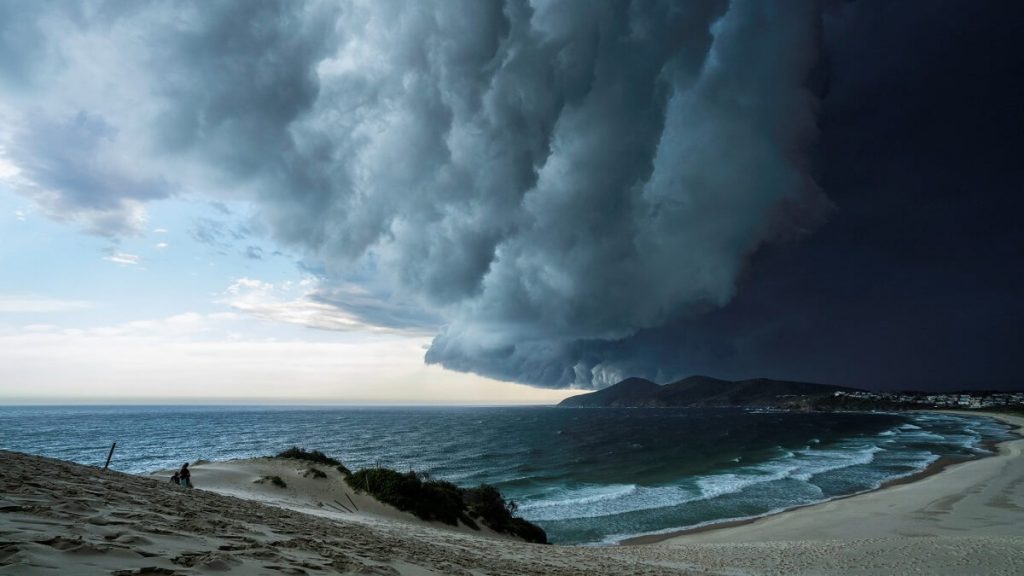
18. Sand Mobilized During Extreme Storms Could Protect Beaches, Offset Some Impacts of Sea-Level Rise
Extreme storms can cause extensive damage to property, beaches, dunes, and the surrounding infrastructure, but a new study shows that they could also help protect beaches from the impact of sea-level rise. “Hundreds of thousands of cubic meters of sand were entering these beach systems during [extreme storms] – that’s similar to the scale of what engineers use to nourish a beach artificially,” says lead author Mitchell Harley. The study examined coastlines across Australia, the United Kingdom, and Mexico that had seen extreme storms or extended storm clusters, followed by a period of beach recovery. The gains in sediment measured were enough to theoretically offset decades of projected shoreline retreat. Despite causing upper beach and dune erosion, extreme waves can potentially contribute positively to a coast’s overall sand budget – though whether this extra sand has come from offshore, from around the corner, or both, is unknown.
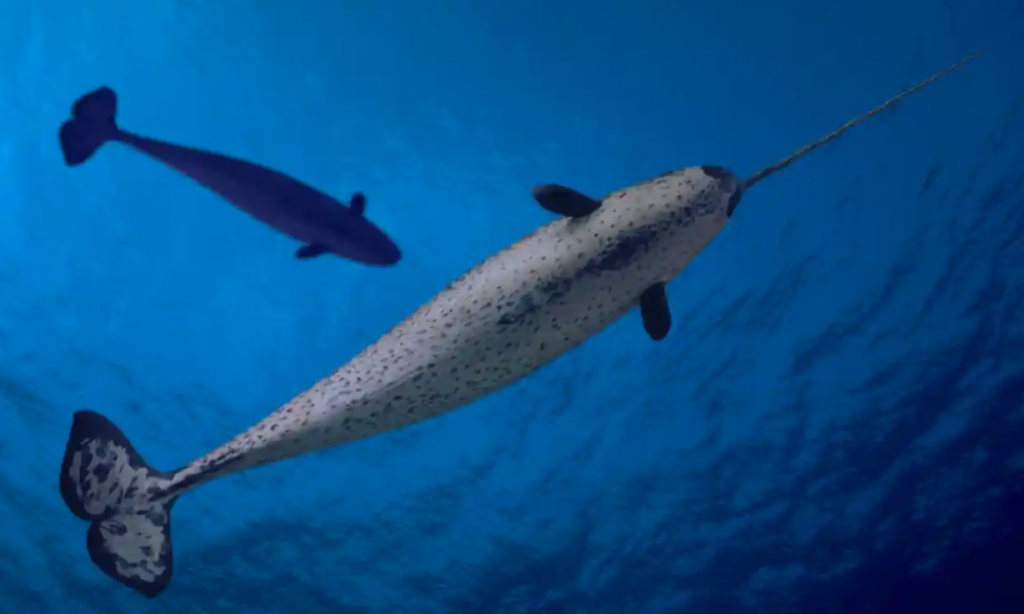
19. Rejection of Arctic Mine Expansion Bid Offers Hope for Narwhal Population
The expansion of an iron ore mine in the Arctic that would have increased shipping and led to the “complete extirpation of narwhal” from the region has been blocked. After extensive consultations and deliberations, the Nunavut Impact Review Board rejected Baffinland Iron Mines Corp’s request to significantly increase mining on the northern tip of Baffin Island in Nunavut, Canada. The area is home to one of the world’s richest iron ore deposits, and the densest narwhal population in the world. The review board said that the mine expansion project carried potential for “significant and lasting negative effects on marine mammals, the marine environment, fish, caribou, and other terrestrial wildlife, vegetation, and freshwater.” Dan Vandal, Canada’s northern affairs minister, can now decide whether to side with the review board or with Baffinland. The final decision on the future of the mine’s operations is the federal government’s.
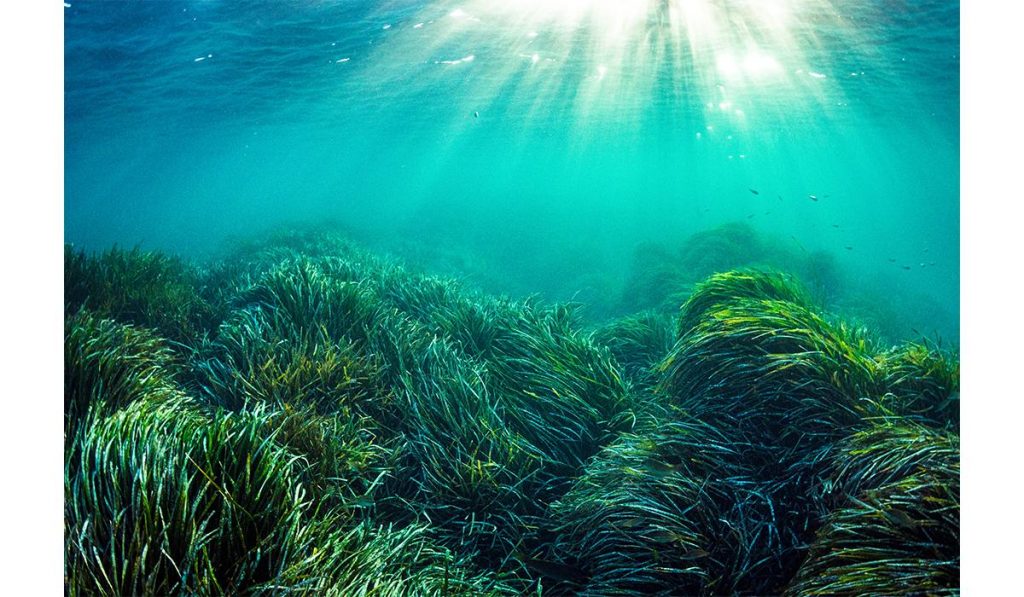
20. New Research Shows Which Mediterranean Coastal Communities Must Plan for Seagrass Loss
A new study reveals which parts of the Mediterranean face the greatest socio-economic threats from seagrass loss from rising sea temperatures. Researchers found that by 2050, almost all areas of the Mediterranean will hit maximum daily sea surface temperatures above 29C and experience marine heatwaves long enough to seriously damage seagrass. Most coastal areas hosting seagrass will be at high risk. The impact of seagrass loss on coastal defenses is likely to be felt most severely in the coastal regions of Italy and Tunisia, as well as Cyprus. Meanwhile, Tunisia and Libya will feel the loss of seagrass-dependent fisheries, with fisheries in Greece, Italy, Turkey, and Spain also seriously at risk. Areas at high risk of reduced coastal protection may need nature-based solutions, such as wetland restoration, as well as investment in climate-resilient green infrastructure.
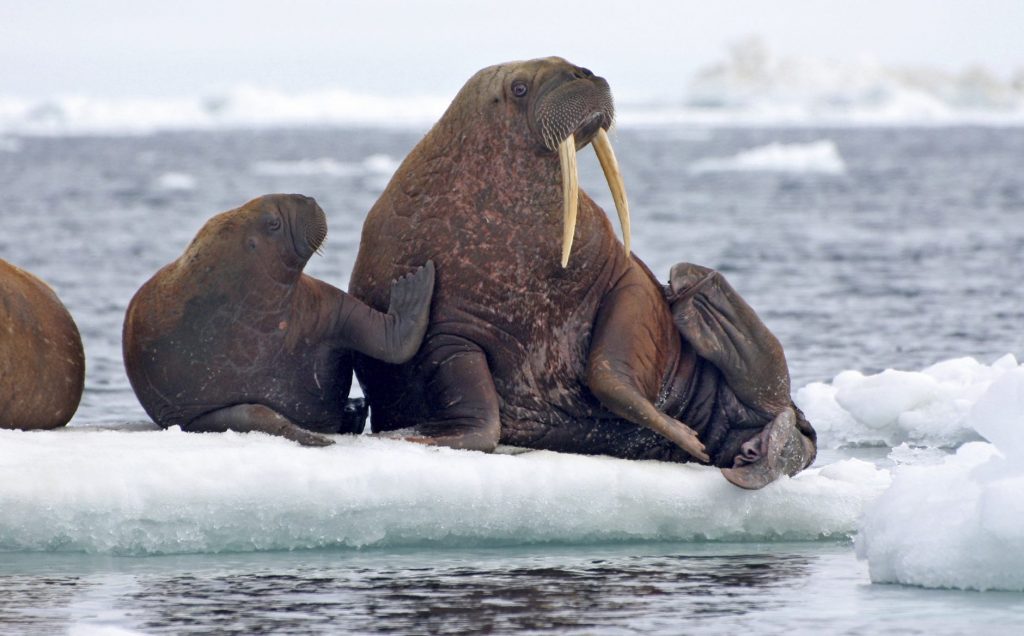
21. Feds Agree to Regular Counts of Threatened Marine Mammals
The federal government must provide newly updated assessments of certain subspecies of threatened marine mammals under the terms of a settlement announced in federal court. The settlement is a win for the Center for Biological Diversity and Turtle Island Restoration Network, which sued government agencies claiming they had failed to update expired population assessments for nine subspecies of sea otters, polar bears, manatees, and walruses. Many are in the “strategic” category under the Marine Mammal Protection Act, which holds that certain levels of human-caused death could threaten the group’s survival. Attorney Emily Jeffers said, “These documents will help us understand the threats facing manatees, otters, and walruses, but they’re also important for setting limits on activities that can harm them. This will help support strong federal action to shield these animals from pollution, climate change, and other hazards that are getting more and more deadly.”

22. Corals Thrive, Fish on the Decline in Turkey’s Marmara Sea
To improve the habitat of Turkey’s Marmara Sea, a project by nongovernmental organizations (NGOs) and universities boosted the number of gorgonia corals in the sea, but elsewhere, worsening climate change has dealt a blow to fish in the Marmara, experts warn, urging protective measures. The sea has seen a decline in stocks, species, and oxygen levels due to climate change. “Increasing water temperatures push species intolerant of this new condition to extinction or away from their usual habitat. Every disappearing species is replaced with ‘opportunistic’ species, which can easily shift to adapt to the environment and can cause ecological problems,” professor Melek Işinibilir Okyar said. The Marmara Sea is an important source of income for thousands of fishermen in littoral cities and towns. “We need to take measures to boost fish stocks and biodiversity,” Okyar said.
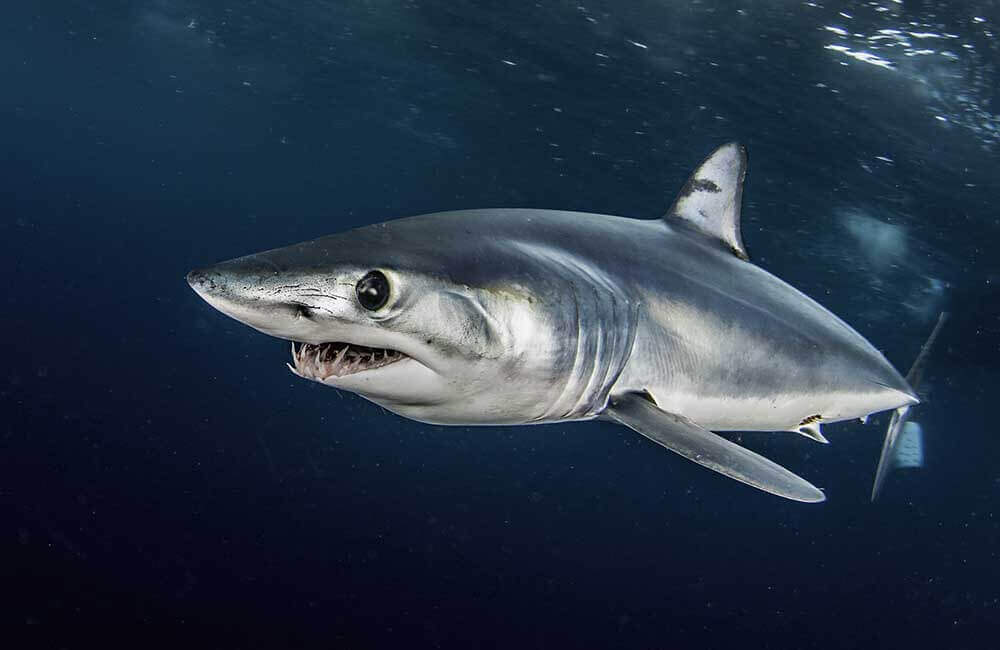
23. Landing Ban Means More Mako Sharks Are Likely to Survive Accidental Capture
A ban on landing endangered shortfin mako sharks is likely to mean a majority survive accidental capture in the Canadian longline fishery. Two years ago, the Department of Fisheries and Oceans ordered the release of all makos — dead or alive — when landed unintentionally. The policy was adopted in 2022 on a temporary basis by dozens of other fishing nations belonging to the International Commission on the Conservation of Atlantic Tunas. Shark researcher Heather Bowlby said the prohibition is the best way to protect the apex predator. Recent projections say total mako removals must drop to under 500 metric tons in order to give the species a 52% chance of recovery by 2070. However, the species-at-risk assessment notes Canadian bycatch in the North Atlantic is a fraction of international levels, meaning “there is no scope for Canada to affect recovery” even if removals went to zero.
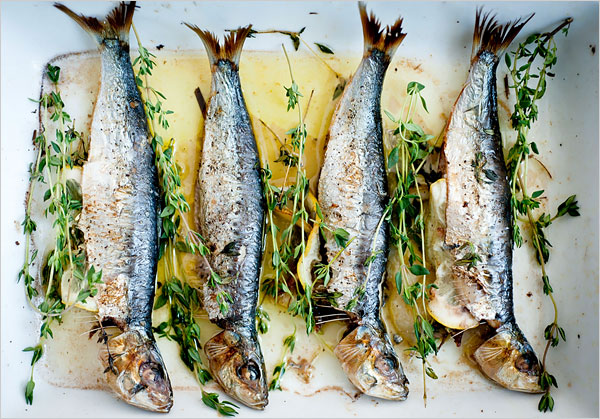
24. Climate Change Is Now on the Menu at Seafood Restaurants
Restaurant menus across Western Canada will soon see an influx of catch preferring warmer water. As it turns out, climate change may have something to do with this. Menu changes are driven by culinary trends, consumer preferences, and many other factors that affect the availability of the ingredients. As the ocean temperature rises, many marine fish and shellfish move from their traditional habitats in search of cooler waters. This movement affects the availability of seafood catch, compelling chefs to rewrite their menus. Applying an index called “mean temperature of catch” to measure such changes in species of fish reveals that the catch of warmer-water species along Canada’s west coast has increased from 1961 to 2016. As climate change continues to shuffle species’ distribution in ocean waters, we can expect that changes to seafood menus will become even more pronounced.
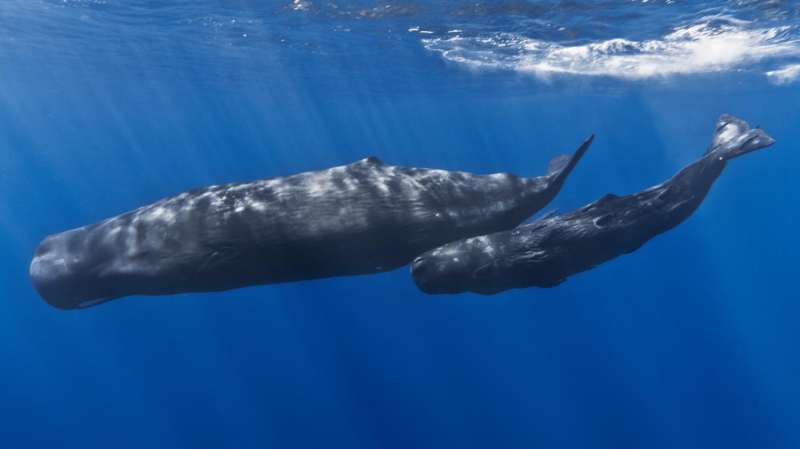
25. Two Whales Found Dead Off the Florida Keys, and One Towed to a Marina
Two sperm whales died within seven days of each other in the Florida Keys, according to officials. One was a juvenile that died off Key Largo. The other was a large adult male that died after beaching itself about 15 miles northeast of Key West. The adult was towed to Stock Island, just east of Key West. Given that the adult was a male, there is likely no connection between his death and that of the calf. But, it is unusual to have two sperm whale strandings in the same region within such a short time period. Among the common human causes of deaths of sperm whales and other marine mammals are boat and ship strikes and entanglements in fishing gear. Later examination showed the adult’s stomach contained nets and plastic.
/




